The South Slough–and estuaries in general–are important spawning and nursery grounds for many marine fish species. However, the last time that there was a comprehensive assessment of the fish community in the South Slough was back in 1987. So approximately two years ago, the South Slough received funding to monitor the fish populations again. Once a week almost every month, a set of six sites are sampled at high and low tide. The information on the species and number of fish caught in each sample helps the reserve understand how fish communities in the slough are changing across seasons and years in different parts of the estuary. By combining this species abundance and richness data with water quality data, they can also assess how environmental conditions influence species presence, absence, and abundance. Overall, this project aims to characterize long-term trends in habitat use by fish, and it can additionally help evaluate the effectiveness of past restoration efforts.
This fish monitoring project is the other main part of my internship with South Slough, in addition to the green crab work, and this week was the first fish sampling week scheduled since I started my internship. So starting this Monday, my time this week was almost entirely spent with fish work. The method used for the fish monitoring is called seining. Seining consists of a large net that hangs vertically in the water, with a float line on the top and a weighted line on the bottom. As the net is deployed along the shore, the weighted line drops the net to the bottom of the water and the float line keeps it buoyed on the water surface, creating a large barrier that scoops up all the fish in the seine net area.
To deploy the seine net, we first set a person on shore as the anchor, holding a rope at one end of the net. Then a person on the boat deploys the net from the bow, creating an arc near the shore.
Two people then each hold one end of the net, and haul the net through the water to the shore.
Once the net reaches the shore, everything in the net is funneled to the bag at the bottom of the net. All the fish and crabs in the net are then placed in buckets (with oxygenators).
All of the fish and crabs caught are then identified, and their length and weight are measured.
This week, we caught dozens of different kinds of fish and crabs–Chinook salmon juveniles (both wild and hatchery-released), different kinds of perch and sole, herring, anchovies, pipefish, and more.
It was exciting to learn new field techniques and to become better with fish identification as the week went on. The next week of fish seining will be sometime in August, and I’m excited to do it all again!

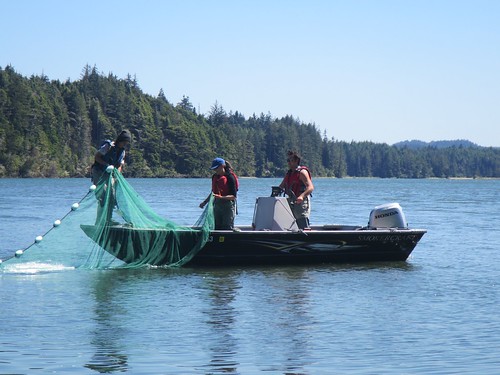
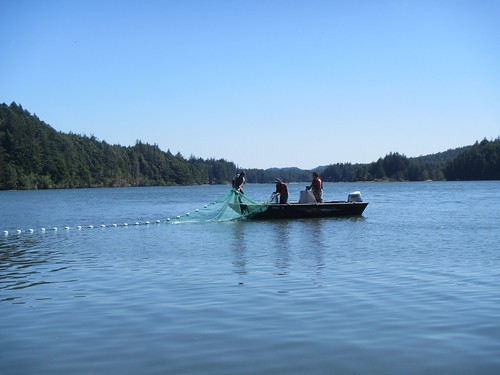
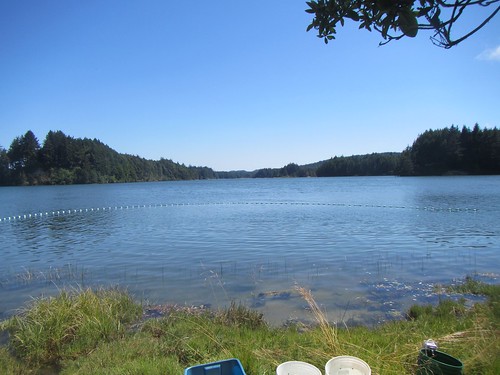
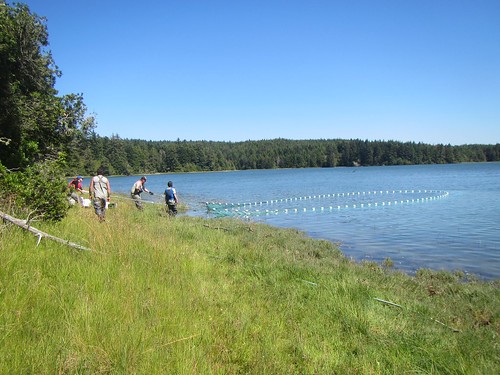
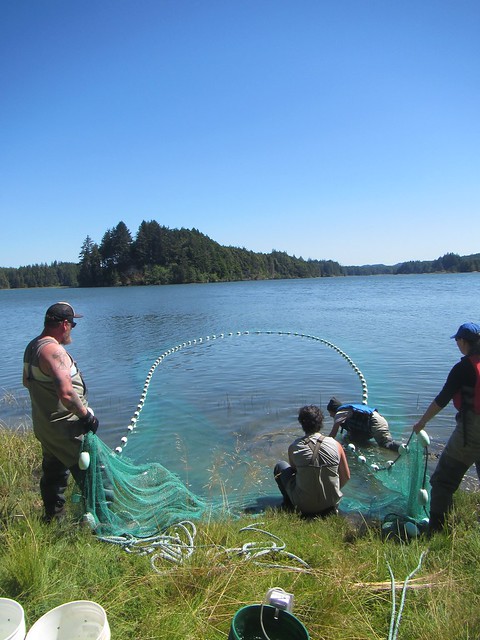
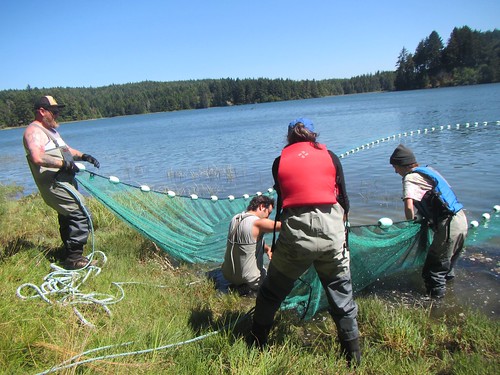
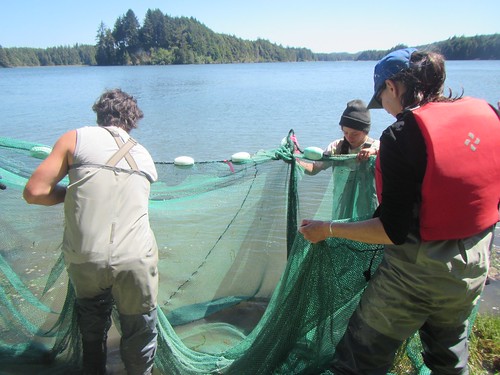
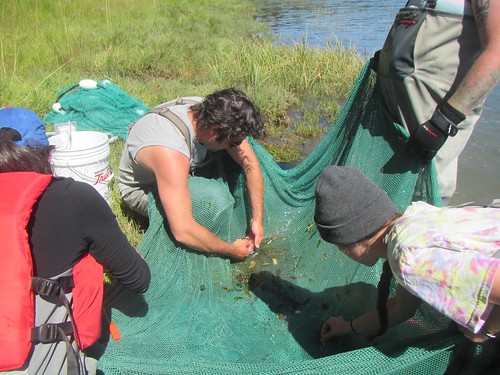

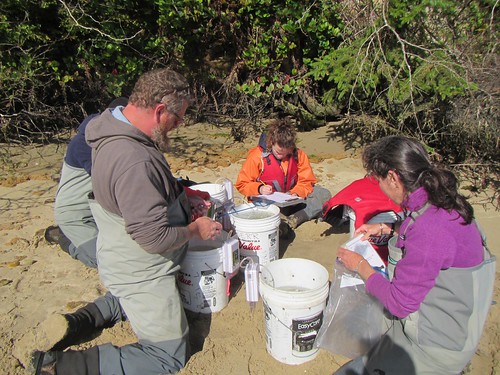
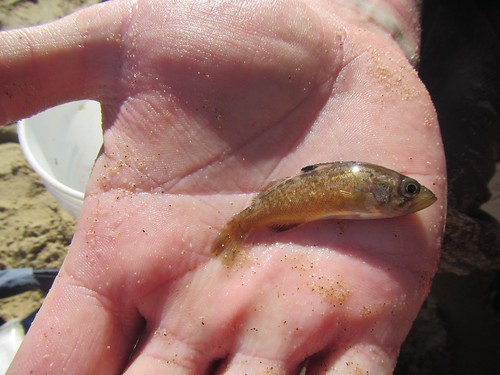
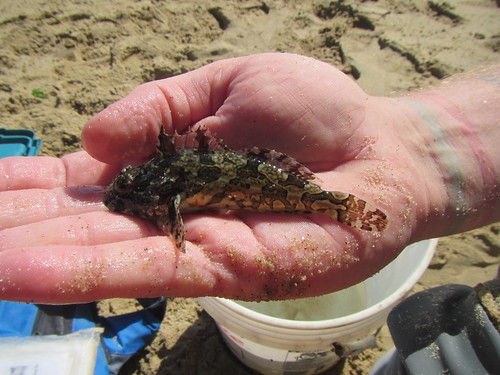

Excellent job taking descriptive photos to describe the process of fish seining! They certainly helped me understand how the process works.